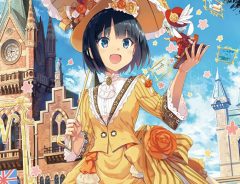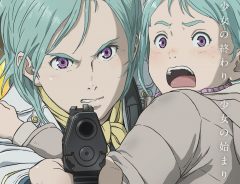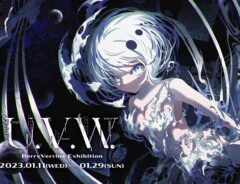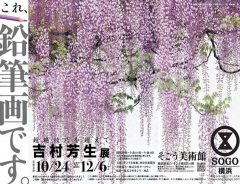
Source: © Kyodo News PR Wire
Mesmerizing exhibition of neon artwork in Shizuoka to run until January 11th, 2021
- Tags:
- art exhibition / Matsuzakaya / neon / neon art / neon sign / Shizuoka
Related Article
-

Japan Celebrates Year Of The Rat With Impossibly Cute Capybara Hot Spring
-

Eshi-100 Exhibition of 100 Leading Anime and Manga Illustrators in Akihabara
-

Exhibition and goods commemorate opening of final film in “Eureka Seven: Hi-Evolution” trilogy
-

Peter Doig exhibition at Tokyo Modern Art Museum extended until October 10th
-

Popular Japanese illustrator BerryVerrine’s second solo exhibition “U.V.W.” opens in Shibuya
-

Exhibition of drawings by masterly Yoshio Yoshimura opens at Sogo Museum of Art in Yokohama


As commercial sign writers switch to LED technology, neon lights seem destined to become quaint relics of the 20th century. But neon still has its fans, as shown by the small but dedicated band of neon art afficionados in Japan, the United States and Europe.
The Japanese contingent of the neon art movement will be cheered to hear that an exhibition of neon art is currently being held at the Matsuzakaya department store in Shizuoka.
The “Great Neon Exhibition” gathers Japanese artists working with neon lights across genres to create a “Neon Street of the Near Future.” The exhibition will run until January 11th, 2021.
An example of neon art that won’t be in the Matsuzakaya Shizuoka exhibition | © pxhere.com
The exhibition has been organised in conjunction with neon sign making company Aoi Neon. The neon lights that the company's neon masters make one by one by hand have attracted attention in the world of entertainment, subculture, and commercial art.
As well as a celebration of the beauty of neon, the exhibition functions as a canny way of recycling old neon signage, which is rapidly disappearing from the Japanese night sky as it is displaced by more economical LED signs.
A neon sign from an old motel in Las Vegas, Nevada, USA. Credit: Carol M. Highsmith's America, Library of Congress, Prints and Photographs Division. | © picryl.com
Neon masters will tell you that neon is the fifth-most-abundant element in the universe. Left to its own devices, it glows bright orange, but when combined with noble gases, sign makers are able to create a variety of colours. Combine it with helium and you get pink. Combine it with krypton and you get green.
Neon was first used for commercial signage at the Paris Motor Show in 1910, when chemist and engineer Georges Claude wowed visitors with the now-familiar saturated colours. Within a couple of decades, neon signs had become an intrinsic part of the American landscape.
In the post-war years, American cities from Las Vegas to New York and Chicago came to be defined by the brightly lit signs that pierced the darkness of the night sky. Neon signs made promises and staked claims for an optimistic country. Although they were bound up with commercialism from the off, there was always something romantic about them, and this lent them a poignancy that few Americans could resist.
By the 1960s, perhaps inspired by Pop Art, artists had started using neon to make sculptures. In recent years, the British artist Tracey Emin has shown a new generation of art lovers what can be done with neon, but she is only the best-known of a coterie of artists to have experimented with neon in recent years.
Among the Japanese artists to have created neon works are Rieko Akatsuka, Asuka Watanabe, Takkyu Ishino, SHETA, Tatsunko Harawa and Mihara Yasuhiro, all of whom are taking part in the Great Neon Exhibition.
Participating artists will gather in the exhibition’s ‘near future’ neon-lit ‘street,’ where they look forward to meeting fans, among whom are sure to be many musicians, contemporary artists, fashion designers and graphic designers.
The Great Neon Exhibition opened on the 3rd Floor of the North Building of the Matsuzakaya department store in Shizuoka on December 18th and is due to run until January 11th. Admission is ¥800 for adults and ¥500 for high school students.
The exhibition space is open from 10:00 am until 19:00, with last admission at 18:30. Note that there is some variation in opening hours over the New Year’s holiday period. See the exhibition website for more details.
You can find Matsuzakaya Shizuoka at 10-2 Miyukicho, Aoi-ku, Shizuoka 420-8560. There is direct access to the store from the north exit of JR Shizuoka station. See the website here.